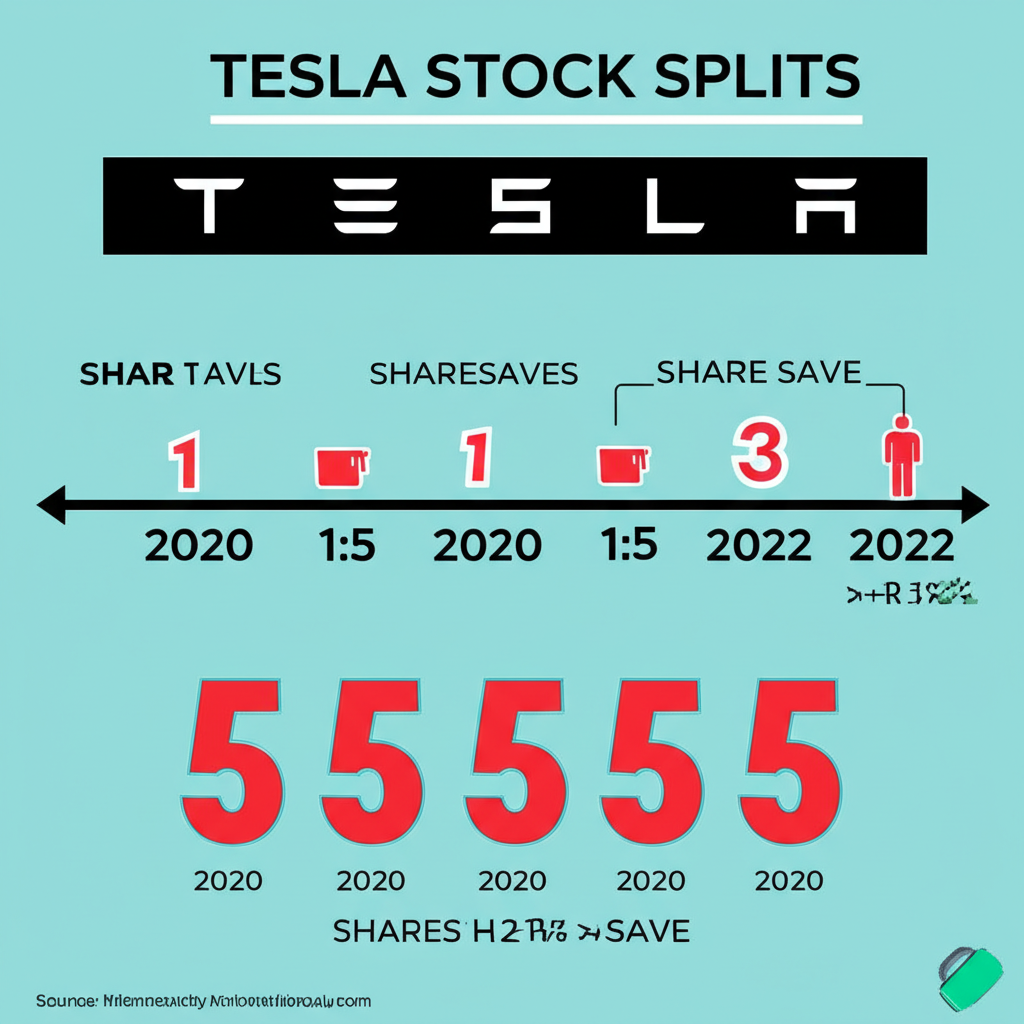
Last Day to Buy Tesla Before Split? Unpacking Key Dates & What It Means for Your Investment
Table of Contents
ToggleIntroduction: Navigating Tesla’s Stock Splits
Tesla, Inc. (TSLA) has long captured the attention of investors, not only because of its groundbreaking innovations in electric vehicles and energy solutions but also due to its notable movements in the stock market. Among these, stock splits have emerged as pivotal moments that spark widespread discussion—particularly around timing and strategy. Phrases like “last day to buy Tesla before split” frequently trend during these periods, often revealing a misunderstanding of how stock splits actually work. This guide breaks down Tesla’s stock split history, clarifies key dates that matter, and helps investors make smarter decisions based on fundamentals rather than market noise.

Tesla’s Stock Split History: Key Dates and Ratios
To understand the impact of Tesla’s stock splits, it helps to look back at the two major corporate actions the company has taken in recent years. Both were designed with a clear goal: making shares more accessible to everyday investors without altering the company’s underlying value.
The 2020 Tesla Stock Split (5-for-1)
In August 2020, Tesla announced its first stock split, a move that energized retail investors and signaled confidence in its future growth. The 5-for-1 split significantly reduced the share price while increasing the number of shares outstanding.
- Announcement Date: August 11, 2020
- Record Date: August 21, 2020
- Ex-Split Date: August 31, 2020
- Split Ratio: 5-for-1
Under this structure, every shareholder received four additional shares for each one they owned. If you held one share before the split, you ended up with five. The share price adjusted accordingly—divided by five. For example, a stock trading at $2,000 pre-split would trade at $400 post-split. The total value of an investor’s position remained unchanged, but now spread across more shares at a lower price point.

The 2022 Tesla Stock Split (3-for-1)
Just two years later, Tesla executed another split, this time on a 3-for-1 basis, reflecting its continued focus on broadening its investor base.
- Announcement Date: August 4, 2022
- Record Date: August 17, 2022
- Ex-Split Date: August 25, 2022
- Split Ratio: 3-for-1
Shareholders who owned Tesla stock by the record date received two extra shares for each one they held. A share price that stood at $900 before the split dropped to $300 afterward. Again, while the number of shares increased, the total value of an investor’s holdings stayed constant. Official details on this split were included in Tesla’s proxy statement filed with the SEC, accessible via the Tesla Investor Relations documents page.
Tesla Stock Split History
| Split Year | Split Ratio | Announcement Date | Record Date | Ex-Split Date | Effect on Shares (per 1 original) |
| 2020 | 5-for-1 | August 11, 2020 | August 21, 2020 | August 31, 2020 | 5 shares |
| 2022 | 3-for-1 | August 4, 2022 | August 17, 2022 | August 25, 2022 | 3 shares |
Understanding “The Last Day to Buy”: Record Date vs. Ex-Split Date
One of the most common points of confusion among investors is the idea of a “last day to buy Tesla before the split.” This phrase usually refers to the record date, but many fail to distinguish it from the ex-split date. Knowing the difference is essential for understanding eligibility and how trades settle.
What Is a Record Date?
The record date is the cutoff set by the company to determine which shareholders qualify for the additional shares from a split. To be counted as a shareholder of record, your purchase must settle in your brokerage account on or before this date. Because stock trades typically settle two business days after the transaction (T+2), you generally need to buy at least two days prior to the record date. This is the real deadline for ensuring you receive the split shares directly from the company.

What Is an Ex-Split Date?
The ex-split date is the first day the stock trades at its new, split-adjusted price. On this day, the ticker begins reflecting the lower share price, and new buyers no longer receive the extra split shares as a separate distribution—they’re already factored into the price. If you buy on or after the ex-split date, you’re purchasing shares that have already been adjusted for the split. While you don’t get a bonus issuance of shares, your investment still holds the same proportional value.
Navigating the Cut-off: Practical Implications for Investors
The distinction boils down to this: the record date determines who gets the split shares, while the ex-split date marks when the market reflects the change. If your goal is to see the new shares appear in your account, you must own the stock by the record date. However, from a financial standpoint, buying before or after the split doesn’t give you an advantage in terms of value. The market adjusts quickly, and the economic outcome is effectively the same.
What Happens if You Buy Tesla Before or After a Split?
The timing of your purchase relative to the split can affect how your holdings appear in your portfolio, but it doesn’t change the actual value of your investment. Let’s break it down.
Buying Before the Record Date
If you buy Tesla shares and the trade settles by the record date, you’re eligible for the additional shares from the split. These new shares usually appear in your account a few days after the ex-split date. For instance, if you owned 10 shares at $900 each ($9,000 total) before a 3-for-1 split, you’d end up with 30 shares at $300 each—still totaling $9,000. The only change is the number of shares and their individual price.
Buying Between Record Date and Ex-Split Date
This is a narrow window and can be tricky. If you buy after the record date but before the ex-split date, you pay the pre-split price, but the seller (not you) receives the split shares. Brokers often handle this through “due bill” arrangements, where the seller must deliver the additional shares to you. This process adds complexity and is generally not ideal for most individual investors.
Buying On or After the Ex-Split Date
When you buy on or after the ex-split date, you’re purchasing shares at the new, lower price. There’s no waiting for additional shares to be credited—they’re already included in the price. For example, buying 10 shares at $300 post-split gives you the same $3,000 exposure as buying fewer shares at a higher price before the split. The total value remains consistent; only the structure differs.

Why Do Companies Like Tesla Split Their Stock?
Stock splits are strategic decisions—not signs of financial growth, but tools to improve market dynamics. Tesla’s splits were driven by several practical and psychological factors.
Increasing Accessibility and Liquidity
As Tesla’s share price climbed into the hundreds and even thousands of dollars, it became less accessible to smaller investors. A split lowers the entry barrier, allowing more people to buy shares—even if just one. This broader ownership can boost trading volume and liquidity, making the stock easier to buy and sell. Both the 2020 and 2022 splits occurred after significant price run-ups, suggesting Tesla aimed to keep its stock approachable.
Psychological Impact on Investors
There’s a psychological element at play: a $300 stock may feel more affordable than a $900 one, even though they represent the same company. Some investors perceive lower-priced stocks as having more room to grow, even though the fundamentals haven’t changed. This perception can drive increased interest and short-term momentum, especially among retail traders.
No Change in Fundamental Value
Crucially, a stock split doesn’t change Tesla’s market capitalization, revenue, profits, or intrinsic value. It’s like slicing a pie into more pieces—the pie is the same size; you just have more slices. If Tesla had a $100 billion market cap before a 3-for-1 split, it would still be $100 billion afterward—just with three times as many shares at one-third the price. Earnings per share (EPS) are also adjusted accordingly, so financial metrics remain comparable.
Debunking Stock Split Myths: What a Split Doesn’t Do
Despite their popularity, stock splits are often misunderstood. Let’s clear up some common misconceptions.
One myth is that a split makes a company more valuable. It doesn’t. The market cap stays the same. Any price increase after a split is due to company performance or market sentiment—not the split itself. Another misconception is that shareholders gain wealth overnight. While you end up with more shares, each is worth less, so your total equity doesn’t change. It’s akin to exchanging a $100 bill for five $20s—you have more bills, but the same amount of money.
Some also believe splits signal future dividends or special payouts. That’s not true. Dividends depend on profitability and cash flow, not share structure. Tesla, for example, has never paid a dividend and has no indication of starting, as it reinvests profits into growth.
Future Tesla Stock Splits: Speculation and How to Stay Informed
Given Tesla’s history, investors often wonder if another split is on the horizon. While nothing has been announced, certain conditions could prompt action.
Is a Tesla Stock Split in 2024 or 2025 Possible?
A split could happen if Tesla’s stock price rises sharply and becomes less accessible again. The company has shown a pattern of splitting when the share price climbs significantly—after all, both prior splits followed periods of strong appreciation. If Tesla’s stock approaches or exceeds its pre-split levels (adjusted for previous splits), management might consider another split to maintain broad investor appeal. However, no official signals suggest a 2024 or 2025 split is imminent. The decision ultimately lies with the board and requires shareholder approval.
Where to Find Official Stock Split Announcements
For reliable updates, investors should monitor:
- Tesla Investor Relations: The official IR site posts all corporate news, including SEC filings and shareholder meeting details.
- SEC Filings: Look for Form 8-K (for major events) or DEF 14A (proxy statements) on the SEC EDGAR database.
- Trusted Financial Media: Outlets like Bloomberg, Reuters, CNBC, and The Wall Street Journal report splits as soon as they’re confirmed.
Avoid relying on social media rumors or unofficial forums. Always verify with primary sources.
Beyond the Split: Is Tesla Stock a Good Investment?
While splits generate headlines, they shouldn’t drive investment decisions. What matters more is Tesla’s long-term outlook and business strength.
Consider these factors when evaluating Tesla as an investment:
- Growth Prospects: Tesla’s leadership in EVs, battery tech, AI, and energy storage (like Powerwall and Megapack) positions it for future expansion. Projects like Optimus (robotics) add speculative upside.
- Competitive Landscape: Traditional automakers and startups are catching up. Tesla’s ability to maintain its innovation edge and brand loyalty will be critical.
- Financial Performance: Look at revenue trends, profit margins, free cash flow, and debt levels. Tesla has shown strong profitability in recent years, but growth rates can fluctuate.
- Valuation: Tesla often trades at a premium compared to peers. Assess whether current prices reflect realistic growth expectations.
- Risks: Regulatory challenges, supply chain issues, production delays, and global economic shifts can all impact performance.
A stock split doesn’t change Tesla’s business model, risks, or competitive advantages. It only changes the number of shares and their price. Your investment thesis should be based on fundamentals, not corporate mechanics.
Conclusion: Strategic Investing Around Stock Splits
Tesla’s 2020 and 2022 stock splits were strategic moves to enhance accessibility and liquidity, not indicators of financial transformation. The “last day to buy before the split” is really about the record date—your deadline for being counted as a shareholder eligible for split shares. The ex-split date, meanwhile, is when the stock begins trading at its new price.
In practical terms, buying before or after the split yields the same financial result for a given investment amount. The total value remains unchanged. What should guide your decision is Tesla’s long-term potential, not the temporary buzz around a split. These events are structural, not value-creating. They make shares easier to trade and more appealing to new investors, but they don’t alter the company’s fundamentals.
Frequently Asked Questions About Tesla Stock Splits
When was the last day to buy Tesla stock before its 2022 split?
For the 2022 Tesla stock split (3-for-1), the record date was August 17, 2022. To ensure your trade settled by this date and you were eligible to receive the split shares, you would typically need to have purchased the stock at least two business days prior to August 17th.
Is it generally better to buy stock before or after a split for long-term investors?
For long-term investors, the timing of buying before or after a stock split typically makes no fundamental difference to the total value of their investment. A stock split is a mechanical adjustment; the total market capitalization of the company remains the same. Your investment decision should be based on the company’s fundamentals and long-term outlook, not the split event itself.
What financial impact does a Tesla stock split have on existing shareholders?
Immediately after a stock split, existing shareholders own more shares, but each share is worth proportionately less. Therefore, the total market value of their holdings remains unchanged. For example, in a 3-for-1 split, if you owned 10 shares worth $900 each ($9,000 total), you would then own 30 shares worth $300 each ($9,000 total). There is no direct financial gain or loss from the split itself.
How do I find out if Tesla is planning another stock split in the near future?
Official announcements for any future Tesla stock splits would be found on Tesla’s Investor Relations website, in their SEC filings (such as proxy statements or 8-K forms), and reported by major reputable financial news outlets. Avoid relying on rumors or unverified sources.
If I bought $1,000 worth of Tesla stock 10 years ago, how would the splits have affected my holdings?
Your initial $1,000 investment would have grown significantly due to Tesla’s stock price appreciation over a decade. The two stock splits (5-for-1 in 2020 and 3-for-1 in 2022) would have multiplied your original number of shares by a factor of 15 (5 multiplied by 3). For example, if your initial $1,000 bought you 1 share, you would now have 15 shares, each at a much lower price, but the total value would reflect Tesla’s overall growth.
Does a stock split signify that Tesla’s stock price will increase significantly afterward?
No, a stock split itself does not guarantee a significant increase in stock price. While splits can sometimes generate positive sentiment and increased trading volume, any subsequent price appreciation is driven by the company’s actual performance, market conditions, and investor confidence, not the mechanical act of splitting shares. A split is not an inherent buy signal.
What’s the difference between a stock split and a reverse stock split?
A stock split increases the number of outstanding shares and proportionally decreases the price per share (e.g., 2-for-1). A reverse stock split does the opposite: it decreases the number of outstanding shares and proportionally increases the price per share (e.g., 1-for-2). Companies typically conduct reverse splits to boost a low share price, often to meet exchange listing requirements or improve market perception.
Are there any tax implications when Tesla splits its stock?
Generally, a regular stock split is not considered a taxable event by the IRS. You do not recognize a capital gain or loss at the time of the split. Instead, your cost basis per share is adjusted downwards. For example, if you bought 10 shares at $900 ($9,000 total basis) before a 3-for-1 split, your new basis would be $300 per share for 30 shares ($9,000 total basis).
How does a stock split affect options contracts for Tesla?
Stock splits typically lead to adjustments in existing options contracts. The number of contracts, the strike price, and the number of shares underlying each contract are usually modified to reflect the split ratio. Your brokerage or options clearing corporation will automatically make these adjustments to maintain the total value of your options position. For example, a 1-for-3 split would typically result in more contracts at a lower strike price.
What factors might influence Tesla’s decision to conduct another stock split?
Tesla’s decision for another stock split would likely be influenced by a significantly high share price that could deter new retail investors, the desire to improve stock liquidity and trading volume, and shareholder sentiment. Management typically aims to keep shares accessible and appealing to a broad investor base.
You may also like
Calendar
| 一 | 二 | 三 | 四 | 五 | 六 | 日 |
|---|---|---|---|---|---|---|
| 1 | 2 | 3 | 4 | 5 | 6 | 7 |
| 8 | 9 | 10 | 11 | 12 | 13 | 14 |
| 15 | 16 | 17 | 18 | 19 | 20 | 21 |
| 22 | 23 | 24 | 25 | 26 | 27 | 28 |
| 29 | 30 | 31 | ||||
發佈留言
很抱歉,必須登入網站才能發佈留言。